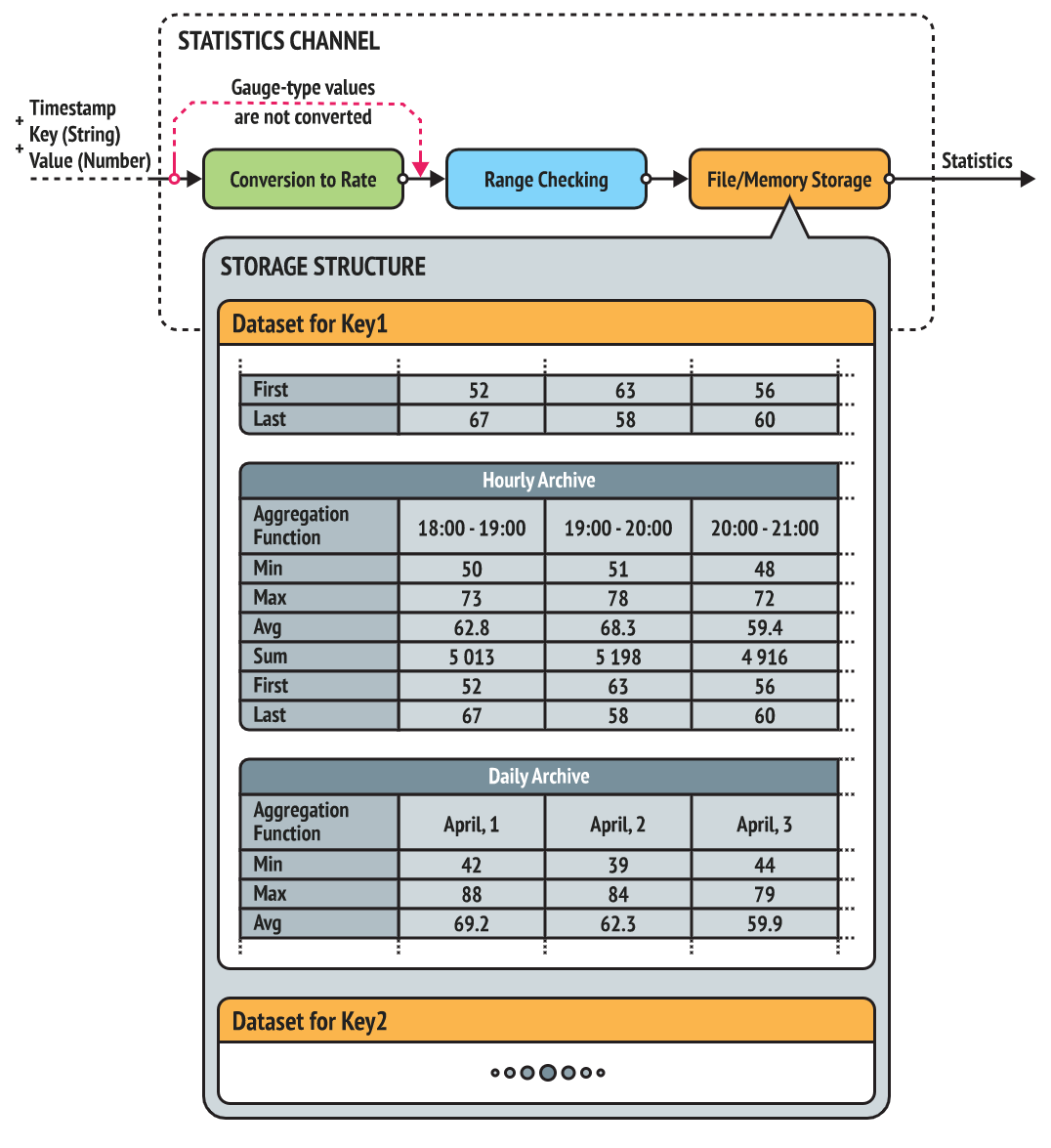Statistics
Iotellect Server can store long-term time series data in a Round-Robin Database (RRD). The module responsible for collecting, storing, and processing time-series data is called the Statistical Process Control module, or simply Statistics.
 | Round Robin Database (RRD) aims to handle time-series data like network bandwidth, temperatures, CPU load, etc. The data are stored in a circular buffer, thus, the system storage footprint remains constant over time. See the RRD Technology article for more information. |
The RRD database has two important benefits for storing long-term statistical data:
Small and constant database size
Extremely fast access to the historical data for any time period
Statistics Channels
In Iotellect, RRD-based statistical data is presented by named Statistics Channels. Each channel processes the value of one context variable. However, since channel Primary Data Points are calculated by expressions, channel source values may be based upon any data flowing inside the system.
Each channel defines:
Expression used to determine values of Primary Data Points
Storage type (file or memory)
Channel type (gauge, counter, etc.)
Active aggregation functions (average, minimum, etc.)
Storage periods for different aggregation intervals (hourly, daily, etc.)
And other options
 | Depending on the statistics storage type, a different level of data integrity is provided. For example, if a file storage type is used, in the event of a power outage while writing a segment of statistics, the file may be corrupted. |
Use of Statistics
Currently, the following Iotellect data processing facilities allow the use of statistics:
Devices. One or more channels may be created to keep a history of every device setting variable. For more information, see Device Setting Statistics.
Models. One or more channels may be created to keep a history of every model variable.
 | To quickly create a Statistics Channel with a step-by-step wizard, open the context menu for any variable and select Configure Statistics and Granulation. |
Channel Elements
Each statistical channel consists of the following elements:
Datasets. Datasets allow to store multiple sets of statistics for one context variable. Simple variables match one dataset, while each row in a tabular variable may be identified by a unique key to form a named Dataset. See Working With Keys for details.
Archives. Each dataset includes several Archives that contain data aggregated by different time periods. For example, the dataset may include one Archive with monthly averages, another one with hourly maximums, etc. The available Archive types are Minutely, Hourly, Daily, Weekly, Monthly, and Yearly.

Statistics Limitations
The main drawbacks of statistics channels are:
Statistical channels are unable to aggregate data based on calendar periods. For example, each month contains fixed amount of milliseconds based on average month duration.
The amount and size of time intervals are fixed. You cannot adjust them.
The aggregation functions list is limited to six: minimum, maximum, average, total, first, and last values.
Was this page helpful?